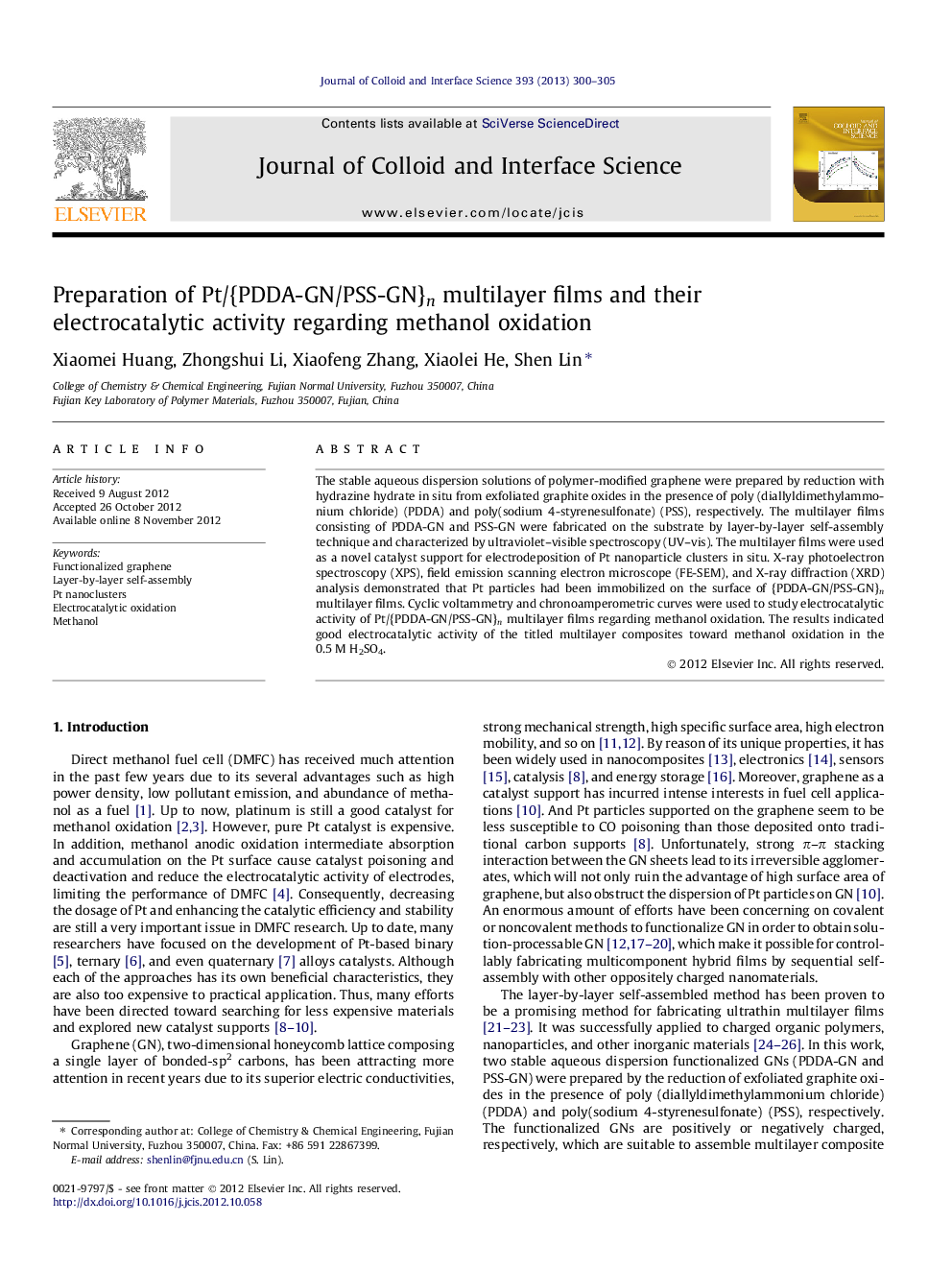| کد مقاله | کد نشریه | سال انتشار | مقاله انگلیسی | نسخه تمام متن |
|---|---|---|---|---|
| 608181 | 1454602 | 2013 | 6 صفحه PDF | دانلود رایگان |

The stable aqueous dispersion solutions of polymer-modified graphene were prepared by reduction with hydrazine hydrate in situ from exfoliated graphite oxides in the presence of poly (diallyldimethylammonium chloride) (PDDA) and poly(sodium 4-styrenesulfonate) (PSS), respectively. The multilayer films consisting of PDDA-GN and PSS-GN were fabricated on the substrate by layer-by-layer self-assembly technique and characterized by ultraviolet–visible spectroscopy (UV–vis). The multilayer films were used as a novel catalyst support for electrodeposition of Pt nanoparticle clusters in situ. X-ray photoelectron spectroscopy (XPS), field emission scanning electron microscope (FE-SEM), and X-ray diffraction (XRD) analysis demonstrated that Pt particles had been immobilized on the surface of {PDDA-GN/PSS-GN}n multilayer films. Cyclic voltammetry and chronoamperometric curves were used to study electrocatalytic activity of Pt/{PDDA-GN/PSS-GN}n multilayer films regarding methanol oxidation. The results indicated good electrocatalytic activity of the titled multilayer composites toward methanol oxidation in the 0.5 M H2SO4.
Figure optionsDownload high-quality image (236 K)Download as PowerPoint slideHighlights
► The graphene-based composite films were prepared by LBL technique.
► Composite films are constructed from functionalized graphene PDDA-GN and PSS-GN.
► Composite films are used as a novel support for electrodeposition of Pt clusters.
► Pt micro–nanoclusters show the unique cauliflower like figuration.
► Composite films supported Pt clusters show good methanol electrooxidation activities.
Journal: Journal of Colloid and Interface Science - Volume 393, 1 March 2013, Pages 300–305